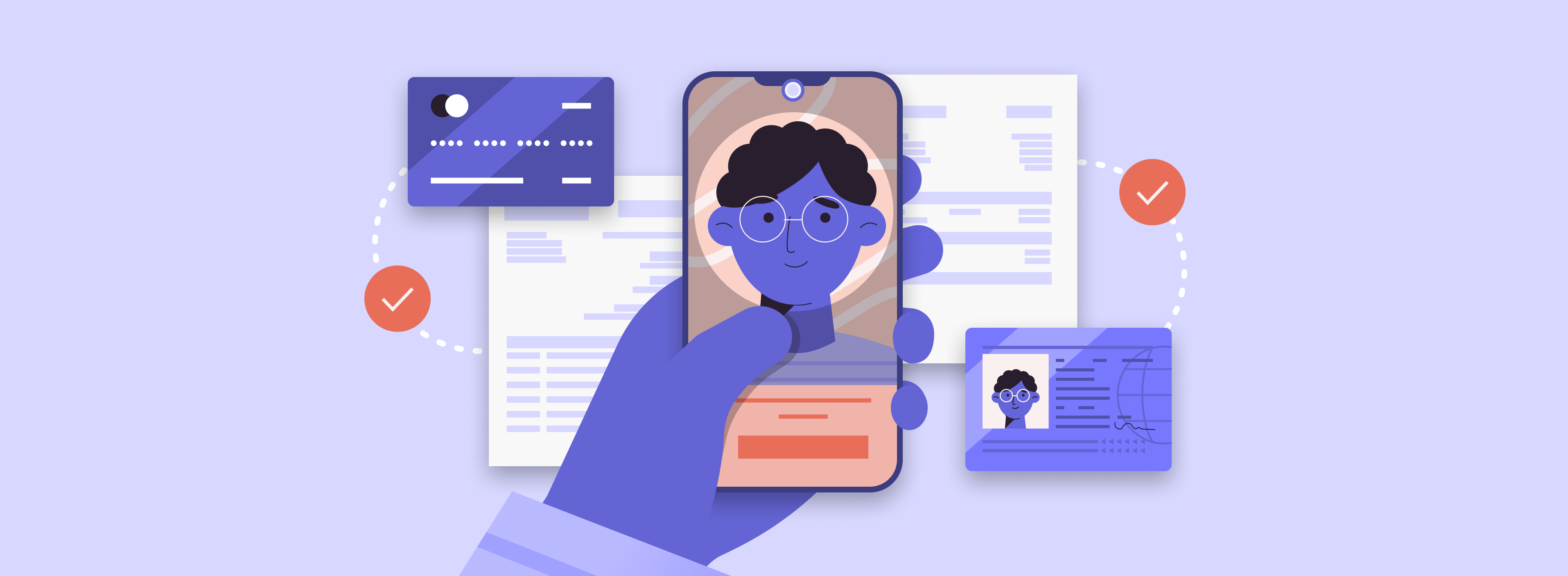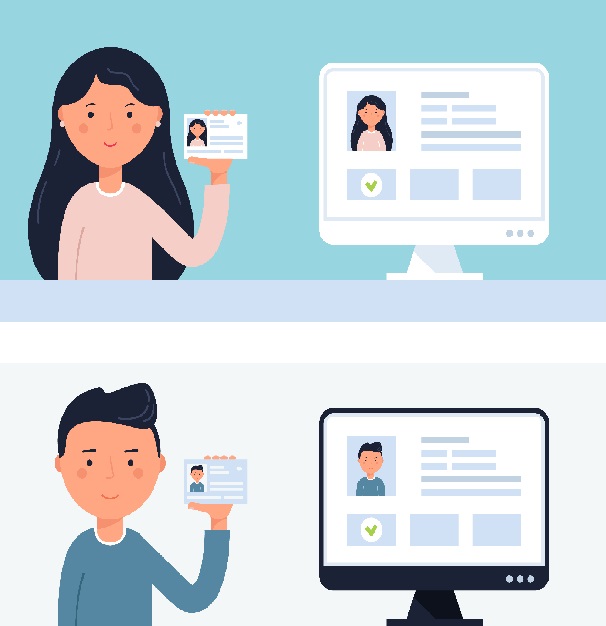A fake ID is a false identification document that is designed to conceal the true identity of the bearer. It can be created using fraudulent identification methods and is commonly used by college students to gain access to alcohol, liquor stores, and college campuses. However, the use of fake IDs is a criminal offense that can result in potential penalties, hours of community service, and even jail time. In this article, we will discuss the definition of a fake ID, its potential risks, and the benefits it is said to offer.
Reasons Why People Get Fake IDs
There are various reasons why people turn to fake identification cards. One of the most popular ones is the desire to gain access to alcohol or other age-restricted products or services. In some countries, the legal drinking age is 21 years old, which can lead college students or young adults to use fake identification methods to purchase alcohol with ease. With false identification, individuals over the age of 18 can mask their true age and buy beer, wine, or spirits at liquor stores or bars without drawing attention.
Another reason why people get fake IDs is for job opportunities that come with age restrictions. For example, some professional driving jobs require drivers to be at least 21 years old or own a commercial driver’s license. For this reason, some people might opt to use counterfeit identification or a fake driver’s license to score employment that they wouldn’t otherwise qualify for.
Socializing is another common motivation behind the desire to have a fake ID. Particularly, college students or young adults attending events or nightclubs might feel like they want to fit in with their peers. In such situations, being seen without an ID or being turned away at the door is not an option. Hence, a fraudulent identification card might be the only ticket to getting into a party or having fun with friends.
Some individuals also seek fake IDs as a way of taking responsibility for their actions or decisions. For example, a person might have missed out on experiencing a significant event like a concert because of age restrictions. Instead of waiting for years to attend, they might acquire a fake identification card as a way of taking control of their life and enjoying the event sooner. This decision could also stem from a desire to feel more independent and responsible.
Emotionally, the need to fit in with a particular group or crowd can be a significant motivation behind getting a fake ID. Peer pressure and the social expectations of the college culture can drive students into wanting to appear more mature or cool. In such cases, having a fake ID could make an individual feel like they are accepted and part of the group.
Types of Fake IDs
When it comes to acquiring a fake ID, there are various types available to choose from. From fraudulent identification documents to counterfeit military or student IDs, the market for fake identification is vast. In this article, we will explore the different types of fake IDs and the potential risks associated with using them.

Standard Driver’s License
In the United States, the standard driver’s license is the most commonly accepted form of identification used for various purposes. It is issued by the Department of Motor Vehicles (DMV) in each state and typically includes the driver’s photograph, full name, address, date of birth, and signature. While the design and format of the driver’s license may differ slightly between states, some common features ensure its authenticity.
One of the most crucial security features of a driver’s license is the hologram. This is a three-dimensional image that is embedded into the license and can be viewed from different angles. The hologram makes it difficult for fraudsters to create fake IDs, as it requires expensive equipment and advanced technology to replicate. Another common feature is the barcode, which contains detailed information about the driver, including their license number, issue and expiration dates, and driving restrictions.
In addition to the hologram and barcode, many states have introduced newer security features such as UV light printing and micro printing. These features are difficult to reproduce and can be detected easily by trained individuals who have access to specific equipment such as UV light scanners and magnifying glasses.
Possessing a fake or fraudulent driver’s license is considered a serious crime in the United States, and the penalties for using one can be severe. If caught, individuals may face fines, jail time, and a criminal record that could follow them for the rest of their lives. The exact penalties vary depending on the state and the severity of the fake ID offense.
Military Identification Cards
Military identification cards are one of the many types of fake IDs available in the market. While these IDs may look authentic and seem like a viable option for those seeking to gain access to certain facilities or purchase age-restricted items, they are illegal and carry serious consequences.
Costs for military identification cards as fake IDs can range from around $50 to over $200, depending on various factors such as the supplier, the level of detail on the card, and the quality of the materials used. Additionally, those attempting to purchase these fake IDs may face additional fees for expedited shipping or even customizations such as holographic overlays.
One unique aspect of military identification cards as fake IDs is that they are often considered more expensive than other types of fake IDs due to the level of detail involved. This is because military IDs require certain features such as micro-printing, raised lettering, and specific barcodes, making them harder to counterfeit or replicate.
However, the risks associated with using fake military identification cards far outweigh any supposed benefits. It is important to understand the potential consequences of possessing one of these fake IDs, which can include arrest, fines, and even imprisonment. This is because military identification cards are considered government property and using them illegally is tantamount to committing fraud. In some cases, the penalties for this type of crime can be as severe as a class D felony.
Student Identification Cards
Student identification cards, especially for those on college campuses, are a common type of fake ID used by individuals who want to gain access to alcohol, cigarettes, or even adult establishments. The cost for vendors to create these cards can range from $50 to $200, with the price affected by features such as holograms and UV printing.
However, the use of student identification cards as fake IDs comes with several potential consequences. Firstly, it puts the individual at an increased risk of identity theft. This is because vendors who offer fake IDs may request sensitive personal information, which can be used for fraudulent purposes.
In addition to identity theft risks, using a student identification card as a fake ID can also lead to legal and reputational risks. College students caught using fake IDs can face a Class 1 misdemeanor, which can result in a fine of at least $500 or fifty hours of community service. They may also risk losing their driver’s license for one year.
College students need to understand the potential consequences of using fake student identification cards as a means of obtaining alcohol or other prohibited items. The risks of identity theft, as well as legal and reputational risks, far outweigh any supposed benefits. Individuals must find legal and appropriate means of obtaining these items or gaining access to adult establishments, rather than putting themselves in harm’s way.
Common Types of Counterfeit Identification
Counterfeit identification has become an increasing problem, with college students being some of the most common individuals in possession of fake IDs. These fake IDs can take on various forms, from student identification cards to military and even driver’s licenses. In this article, we will be discussing the common types of counterfeit identification being used today and the potential consequences of using them.
UV Light Tests
UV light tests are an effective method of detecting fake identification cards. With advances in technology, creating counterfeit IDs has become easier, but it is also easier to distinguish between genuine and fake ones through security features such as holograms, watermarks, and microprint. UV light can reveal these features and help identify if the ID is authentic.
To perform a UV test, one can use a black UV light to observe the area where a security feature should be located on the ID. If the identification card is real, the security feature should become visible under UV light. However, if the ID is fake, it may not have the security features or the security features may not be UV-reactive, meaning they won’t show up under the UV light.
Businesses such as liquor stores and food service establishments often use UV light tests to prevent underage access to alcohol or tobacco products. Many colleges also use UV light tests to ensure the safety of their campuses and to combat fake identification cards often used by students to access restricted areas, events, or alcohol. The use of UV light tests in the military or other organizations that require identification cards is also common.
Fake Identification Card Methods
Fake identification cards have become increasingly popular and sophisticated over time. Some individuals use them to access restricted areas or to buy alcohol and tobacco products while underage. Others use them to steal identities or commit fraud. There are several types of counterfeit identification cards, and several methods used to create them. In this article, we will explore the different types of fake identification cards, the techniques used to create them, and the risks involved.
Types of Fake Identification Cards
1. Counterfeit Software: Some individuals use specialized software and hardware to create fake IDs. They use graphic design applications like Adobe Photoshop or CorelDraw to design the card, and then print it on a card printer. The software can generate a counterfeit ID that looks identical to a real one in terms of design and security features.
2. Physical Replication: This method involves copying a real ID by hand. Individuals can take a picture of a real ID and use it as a template for replication, though this method typically results in non-durable and poor-quality fakes.
3. Digital Reproduction: Digital reproduction methods involve changing an existing ID’s data or manipulating an image of it in a digital environment. In contrast to physical replication, digital reproduction usually results in higher-quality fake IDs, albeit lacking certain physical features of authentic IDs (e.g., micro print, embossing).
Techniques Used to Create Fake Identification Cards
1. Counterfeit Software and Tools: One technique of producing fake IDs is counterfeit software. The software can mimic various security features like holograms, micro printing, and watermarks found in real IDs. Fake ID makers may also use specialty printers and scanners to create laminated cards that look like real IDs.
2. Hologram Replication: Many identification cards like driver’s licenses or passports have holograms that are difficult to replicate. However, counterfeiters can replicate these holograms by using specialized software and printers. They print the design of the hologram on a transparent film, then laminate it onto the fake ID.
3. Microprinting: Laser printing allows commercial printers to produce extremely small text or graphics known as micro print. This feature is also included in many ID cards and is difficult to replicate without specialized printers.
4. Watermarks: Watermarks are a common security feature found in identification cards. It is created by embedding text or images on the paper of the card. Fake ID makers can replicate watermarks by using specialized paper and printing techniques.
The risks involved in creating a fake ID are many. The most significant risk is being caught, which can result in jail time, criminal charges, and hefty fines. In some states, using a fake ID is considered a felony offense punishable by up to four years in prison. Aside from legal consequences, the use of fake IDs can also lead to identity theft, fraud, and reputational damage. People who use fake IDs and get caught can suffer long-term damage to their reputation, and businesses that fall victim to fraud can lose considerable amounts of money.
Some Benefits Of Having a Fake ID
It is worth noting that having or using a fake ID is illegal and can have severe legal consequences. However, this article aims to explore some of the potential benefits of a fake id that individuals may perceive as a reason to obtain a fake ID, especially for college students, and why it is essential to reconsider the idea of obtaining one.

Access to Alcohol with a Fake ID
Using a fake ID to buy alcohol can seem enticing to underage drinkers, but it comes with serious risks and consequences. Not only is it a criminal offense and a standard driver’s license or other common types of identification, but it can also contribute to developing alcohol abuse and dependency.
Underage alcohol consumption is a serious issue that can have long-term consequences for individuals and businesses. Not only can it lead to risky behavior and harm to the developing brain, but it can also put businesses at risk of reputational damage and legal action.
With counterfeit identification, individuals can easily purchase alcohol from liquor stores, access alcohol delivery services, and even buy drinks at bars and restaurants. However, many establishments have measures in place to prevent the use of fraudulent identification, such as checking for UV light marks and comparing identification with military or student identification cards.
Those caught using false identification to buy alcohol can face potential penalties, including fines, community service, and even jail time. For college students, this can mean hours of community service, disciplinary action from their school, and even the potential for criminal charges.
To prevent access to alcohol with ease, businesses in the food and alcohol service industry should take measures to prevent the sale of alcohol to minors. This can include training employees to recognize fraudulent identification, requiring multiple forms of identification for all patrons, and implementing strict policies for serving alcohol on college campuses.
Other Uses for False Identification Cards
While the use of fake identification cards to buy alcohol and enter clubs is a common occurrence among underage individuals, there are also other instances where these IDs may be used, with varying degrees of potential risk.
One such instance is in the realm of gambling, where individuals may use fraudulent identification to enter casinos or other establishments that require proof of age. This can result in potential legal consequences, as gambling laws are highly regulated, and participating with false identification can be considered a criminal offense.
Fake identification cards can also be used for social benefits, such as gaining access to events or activities that require a minimum age requirement. However, this also comes with potential risks, as it is illegal to misrepresent one’s age in these contexts.
Additionally, there are many other types of fake IDs available besides those used for access to alcohol and clubs. These can include counterfeit identification to gain access to restricted government buildings or airports, as well as fraudulent driver’s licenses or commercial driver’s licenses. These types of fake IDs can have much more severe consequences than simply access to alcohol, potentially resulting in felony charges and other criminal penalties.
Businesses that allow the use of fake IDs face reputational risks and potential legal consequences. Allowing underage individuals access to restricted activities or products places not only the individuals at risk but also the business and any other individuals involved. In addition, allowing fraudulent identification to be used can lead to issues with law enforcement, damage to the business’s reputation, and potential legal action against the establishment.
Conclusion
In conclusion, obtaining a fake ID can have serious consequences that can affect an individual’s legal, financial, and reputational well-being. The potential risks of possessing a fraudulent identification card cannot be overstated, as it can lead to criminal charges, hefty fines, and permanent damage to one’s personal and professional reputation.




